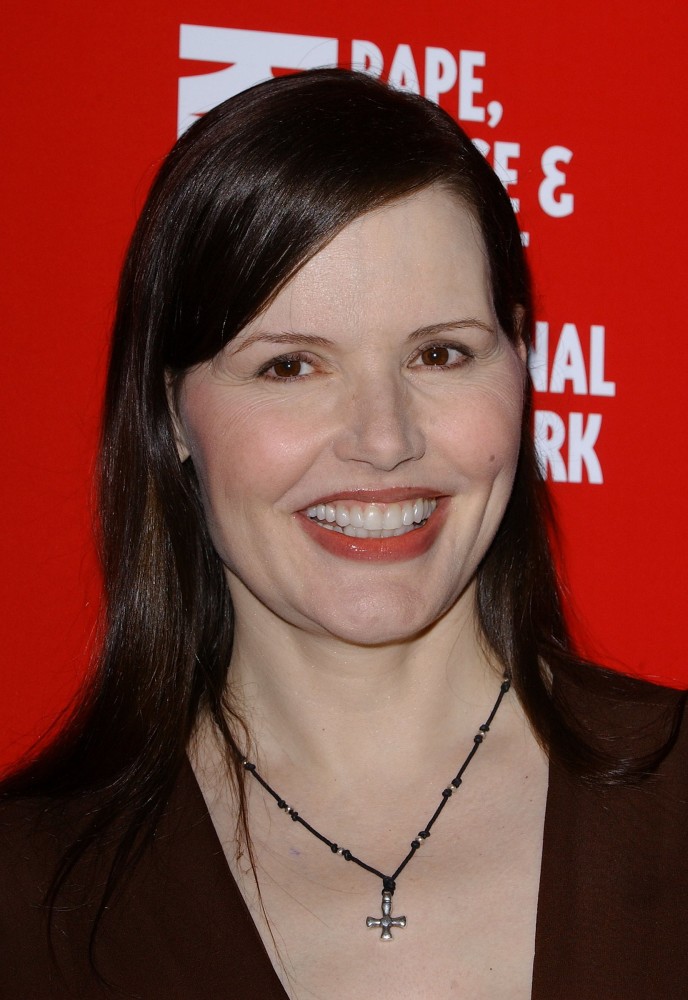By Ken Borsuk
The Stamford Advocate, Conn.
Geena Davis did not appear as the keynote speaker at Fairfield County’s Community Foundation Fund for Women and Girls annual luncheon Thursday to simply bring some Oscar-winning glamor to Greenwich.
She came with data about the challenges women face in how they are portrayed in movies, video and on television.
“The message that media sends is that women and girls have far less value than men and boys,” Davis said to a packed crowd of an estimated 700 people at the Hyatt Regency Greenwich hotel in Old Greenwich.
“In family-rated films, for every one female character that’s a speaking character, there are three male characters. The research also shows in children’s media, the vast majority are narrowly stereotyped and/or hyper sexualized,” she said.
In G-rated films, the female characters wore the same amount of sexually revealing clothing as in R-rated ones, she said, which leads girls as young as 6 to see themselves as sexual objects and leads boys to believe sexist things about the value and role of women.
In films, 81 percent of jobs are held by male characters and the role of females is often to serve as eye-candy. The problem is global, she said, one where women are not seen in movies in high-powered political or science and technology positions.
Davis said the ratio of female to male characters in movies has not changed since 1946.
The data Davis quoted was original research from the Geena Davis Institute on Gender in Media, a nonprofit group she formed to try improving gender balance, reduce stereotyping and create diverse female characters in entertainment for children age 11 and younger.
“I chose to focus on what kids see first,” Davis said. “It’s just common sense. Don’t create a problem you have to solve later on. Let’s show them boys and girls sharing the sandbox equally. Let’s show girls doing interesting things. Let’s make sure people remember, by the way, that we are half of the population.
“Think how dramatically different our world could be if children saw and grew up with and entered the workforce free of these unconscious biases.”
Davis said studios and producers are shocked and interested in changing things once they see her data. She said surveys of studios after her presentations showed 68 percent said they changed two or more projects based on the findings; 41 percent said they changed four or more.
“The universal reaction … is people are stunned when they see what we bring. Their jaws are on the floor. They had no idea how many women they were leaving out,” she said.
Davis shared a few anecdotes about her career: how she agreed to a television show once without reading the script because she was going to play the first female president of the United States; how her dedication and single-mindedness caused her to become the nation’s 13th ranked archer.
She also discussed the media fallout from one of her most famous roles in the movie “Thelma and Louise.”
The role earned her the cover of Time magazine. Fans stopped recognizing her for movies like “Beetlejuice” and “The Fly” and wanted to talk to her about how they reacted to “Thelma and Louise,” she said.
The movie changed the course of her life and cemented her passion to advocate for women, she said.
“If I ever needed a lesson about the power of media images, I certainly had it now,” Davis said. “It made me realize in a very powerful way how few opportunities there are for women to feel excited and empowered by the female characters in a movie. ” If there aren’t female characters in a movie that women can identify with and aspire to be like, you’re robbing them of the best part of seeing a movie.”
Also speaking were Eloisa Melendez and Corinne Wilklow, two of six young women honored for being “in a league of their own,” setting examples for others.
Melendez, 21, is a full-time student at Norwalk Community College and a member of Norwalk’s City Council, making her not only Connecticut’s youngest elected official but the youngest Hispanic elected official in the United States.
She recalled the night she won her council seat in 2013 and how she had campaigned all day, taking a break only for lunch and for an exam with a professor who had no idea she was running until seeing news of her victory in the newspaper.
“As I saw my dream getting closer and closer to reality, I thought to myself, ‘Will they take me seriously? Will they respect me, a 19-year-old college kid,’ ” Melendez said. “But then I snapped out of it and said to myself, ‘Well they’re going to have to.’ ”
Wilklow, 15, of Fairfield, has dreams of being an aerospace engineer and astronaut. She started out with Girl Scout science, technology, engineering and math programs and credits science, technology, engineering and mathematics education as her inspiration.
“Many girls find themselves struggling to find strong, female role models and inspiration for careers in STEM field,” Wilklow said. “They may feel their goals are too hard to achieve or out of reach simply because they are not traditional female roles. I guess I’m lucky because this thought never occurred to me. I never thought twice about not being able to do something because I’m a girl.”
The event was a fundraiser for Fairfield County’s Community Foundation Fund for Women and Girls. Suzanne Peters, the fund’s vice president, said it is the largest women’s fund in New England, delivering $4.5 million in grants to more than 40 organizations serving more than 4,000 women and girls. She said programs are being funded in 22 municipalities in Fairfield County and are in 40 schools, serving females age 5 to 90.














































































































































































































































































































































































